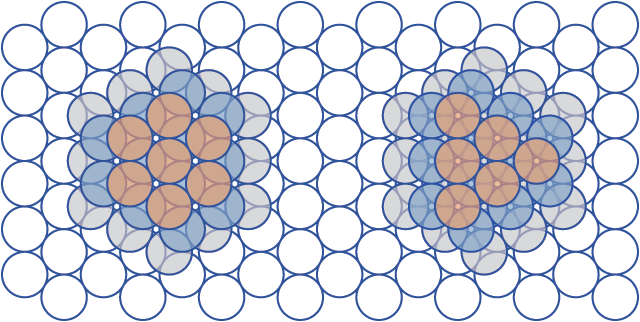Close-packing of spheres
This diagram illustrates both the hexagonal close-packing (left) and face-centered cubic (right) systems for the close-packing of spheres in Euclidean 3-space. Note the hexagonal symmetries of both arrangements. Both can be assembled using the same hexagonally-packed layers—they differ only in how the layers are stacked together.
In each hexagonally-packed layer, there are gaps left between every three spheres. Spheres from the next layer are placed in these gaps. In any given layer, however, one has a choice of which gaps to fill with spheres—only half of the gaps can have spheres in them, since a sphere placed in any particular gap precludes a sphere from being placed in any of the three gaps immediately adjacent to it. Thus, in the hexagonal close-packing system, layers are stacked such that the spheres in each layer align with the spheres two layers below it. In the face-centered cubic system, layers are stacked such that the spheres align with the spheres three layers below it.
